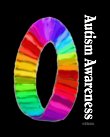Friday May 19, 2006
| Vaccinations: friend or foe?
Concern is rising that tiny drops of mercury injected into millions of infancts may be causing autism, attention deficit disorder and brain damage |
|
| May 18, 2006
By Tony Carnie Vaccinations have saved millions of people around the world from death, illness or crippling diseases. But have they also maimed the brains of countless children? Is the steady rise in autism, attention deficit disorder (ADD) and other brain disorders linked to the tiny drops of toxic mercury which have been injected into the bloodstreams of millions of infants during government vaccination campaigns? Since the 1930s ethyl mercury has been added to a variety of vaccines as a preservative, in the form of Thimerosal. Although mercury is a powerful brain poison, the use of Thimerosal was justified on the basis that it preserved vaccines from bacterial contamination and because only tiny, harmless traces of this poison would enter human blood and brains. Nevertheless, concern has been mounting in the United States and other nations that Thimerosal is largely, or at least partly, responsible for the steady increase in a wide range of neurodevelopmental (brain-related) sicknesses – including autism, stammering, tics, sleeping and eating disorders, attention deficit disorder, speech and language disorders, seizures and co-ordination problems. Barbara Fisher, co-founder of the National Vaccine Information Centre, a United States public education group set up by the parents of vaccine-injured children, has warned of a widespread erosion of public trust in the American health profession and mass vaccination programmes. “More and more parents are reporting that their healthy children are regressing into autism after vaccination, and there are nearly 5 000 autism vaccine injury cases pending in the US Court of Claims,” Fisher told a National Academy of Sciences hearing in 2004. Coincidentally, she said, a government health agency had quickly assembled a committee to hide and restrict access to official vaccine injury databases. “Many parents of vaccine-injured children don’t think it’s a coincidence, just like they don’t think it’s a coincidence when a healthy child goes in for vaccinations and then regresses physically, mentally and emotionally and becomes a totally different child.” Seizures Despite mounting evidence of serious harm, the official message that was sent to the media and the public was to “keep on vaccinating”, even if their children had experienced seizures during earlier vaccinations. “(But) if you keep on vaccinating in the face of seizures you have a very good chance of ending up with a severely brain-damaged child who drools and twitches, and can’t learn to read and write or go to the bathroom without help or grow up to drive a car and go to college and get a job and be a productive member of society,” declared Fisher, whose son is described as vaccine-injured. Some of the first red flags were raised in the early 1980s, when the US Food and Drug Administration was asked to phase out Thimerosal from all over-the-counter medical products. But the main controversy erupted in 1999 when the US Public Health Service and the American Academy of Paediatrics issued a joint statement calling for the removal of all Thimerosal vaccines “as soon as possible” after studies which showed that some children were receiving as much as 200 microgrammes of mercury during the first six months of their lives – a level which exceeded safety guidelines set by the US Environmental Protection Agency. Since then, battle lines have been drawn between experts who defend the use of this preservative, and those who fear that government medical agencies and the pharmaceutical industry have conspired to conceal the real dangers of Thimerosal out of fear that they will be sued by the parents of brain- damaged children around the world. The World Health Organisation issued a statement in 1999 supporting the development of new Thimerosal-free vaccines, but continues to argue that its risks are “small” and theoretical. Major vaccine-making companies began to remove Thimerosal from childhood vaccines soon afterwards, yet it is still used in many parts of the world in vaccines for flu and other sickness.
The watershed year of 1999 also marked the birth of the so-called “Brighton Collaboration”, a body of public and private medical experts which assumed the role of spreading “high quality information about the safety of human vaccines”. Remarkably, one of the co-founders of this quasi-government, quasi-private body was Elisabeth Loupi from the French vaccine and pharmaceutical company Aventis Pasteur. The collaboration also declared its willingness to accept funding from pharmaceutical industries and to allow industry scientists to sit on its expert working groups and committees. This enraged several groups, including Congressman Dave Weldon, who argued that the collaboration merged the regulators and regulated into an indistinguishable group. Weldon said it was unacceptable that vaccine manufacturers would chair or sit on the panels which adjudicated vaccine safety issues. He was also scathing about the role of Centres for Disease Control and Prevention (CDC), which oversees the US government’s vaccination and immunisation programmes. “I want to make it clear that I support vaccinations. My 5-year-old son has had all of his vaccinations. However, I also believe it is appropriate to acknowledge that, like with any medical intervention, different individuals respond differently. We are all unique, we all have a different genetic makeup, and what may cause no harm in one individual just might be harmful in another.” Testifying Lynn Redwood, the mother of an autistic child and President of the Coalition of Safeminds organisation, has also spoken out strongly against the response of American government agencies on the Thimerosal issue. Testifying before a US House of Representatives committee in 2004, Redwood recalled that it had been several years since the first official calls had been made for Thimerosal to be removed from vaccines. “We could not have imagined that in 2004 Thimerosal would still be in vaccines and that the government agencies tasked with protecting the public would have failed to take aggressive action to get the mercury out and to protect our nation’s children,” she said. “We could not have imagined that they would, instead, have focused their energies on avoiding or hiding the truth that is before them, and in so doing undercut the public’s trust while continuing to put babies at risk.” She said the Food and Drug Administration had repeatedly failed to ask tough questions about Thimerosal or to require proof of safety while allowing its increased use in vaccines. The agency had been “asleep at the switch” and seemed to have abdicated its responsibility to the public. “I and many of my medical colleagues remain astonished that we even have to ask the FDA to stop allowing mercury to be injected into our babies,” she said. “We have trusted that the FDA was doing its job . . . (but) that trust has been proven undeserved in this case.” The CDC had been even more egregious, she claimed. “At every turn, when the CDC could have alerted the public and taken a strong stand against the use of Thimerosal, they have chosen instead to promote flawed epidemiology studies as proof that no evidence of harm existed.” If the uninformed public accepted at face value the statements of the CDC website, they would conclude that Thimerosal had been rigorously tested and that it posed few risks. “Nothing could be further from the truth,” Redwood argued. More recently, a study by father and son medical researchers David and Mark Geier has suggested a clear correlation between a drop in autism rates in the United States and the gradual phasing out of Thimerosal from childhood vaccines, which began in 1999. The department said it hoped to compile responses to the questions by Friday. |

